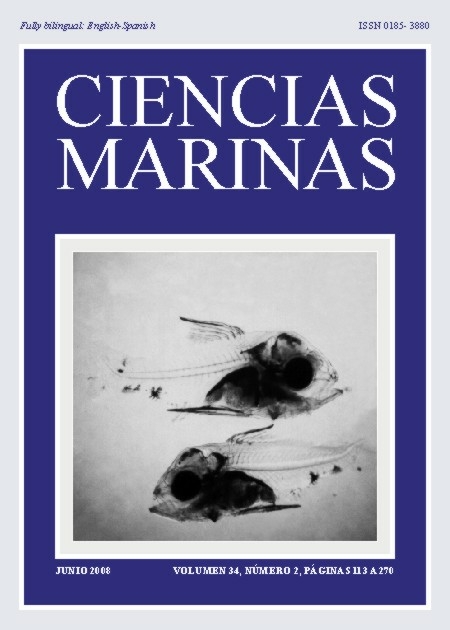Induced spawning and larval rearing of spotted rose snapper, Lutjanus guttatus, at the Marine Biology Station, Puntarenas, Costa Rica
Main Article Content
Abstract
Wild spotted rose snapper, Lutjanus guttatus (n = 400, 60–100 g), were captured and grown out in cages during one year (February 2001 to February 2002). When the mature stage was detected by cannula samples, females (n = 9) were induced to spawn with a total dose of 1600 IU of human chorionic gonadotropin (HCG) per kilogram of body weight, given in two injections (56% and 44% of the total dose). Males received only one injection of 200 IU HCG kg–1 body weight, at the time of the second female injection. The sex ratio (female:male) was 1:2. Mean female body weight was 604.9 ± 98.8 g (36.4 ± 2.1 cm). Egg release occurred 9–12 hours after the second injection (latent period), at a temperature of 26.3–28.2ºC, salinity of 30–32‰, and oxygen concentration of 5.5–6.6 g L–1. The fertilization rate was 90% of buoyant eggs, with a mean egg diameter of 0.857 ± 0.044 mm. Hatching occurred 15 hours after spawning (h.a.s.) at 26.3–28.2ºC. Larvae started feeding 65 h.a.s. and the postflexion stage was observed 27 days after spawning (d.a.s.). The critical period was observed 3–5 d.a.s., as in other lutjanid species. At 26 d.a.s., the growth rate was 0.243 mm d–1 and the survival rate was 1.5%. The growth rate of the fingerlings (171 d.a.s.) was 0.2 g d–1, with a mean body weight of 33.36 ± 9.13 g. Naturally spawned larvae grew until 30 d.a.s., when massive mortality occurred.
Downloads
Article Details
This is an open access article distributed under a Creative Commons Attribution 4.0 License, which allows you to share and adapt the work, as long as you give appropriate credit to the original author(s) and the source, provide a link to the Creative Commons license, and indicate if changes were made. Figures, tables and other elements in the article are included in the article’s CC BY 4.0 license, unless otherwise indicated. The journal title is protected by copyrights and not subject to this license. Full license deed can be viewed here.

